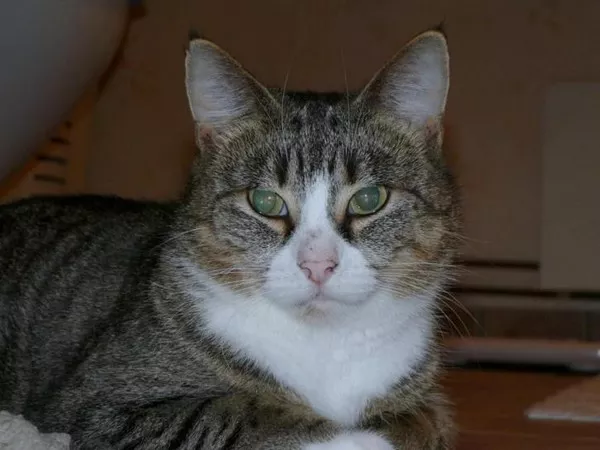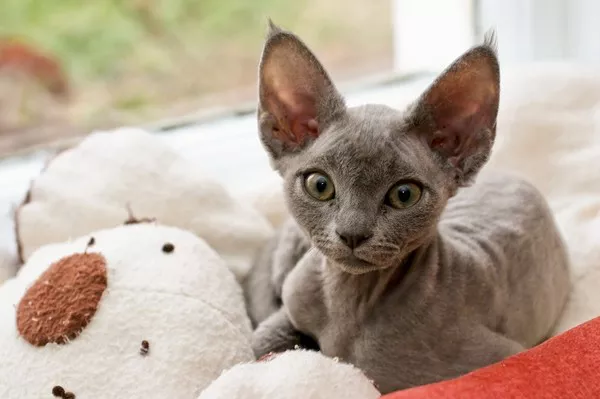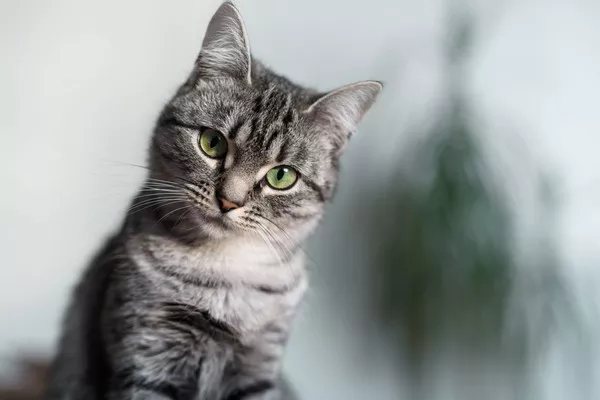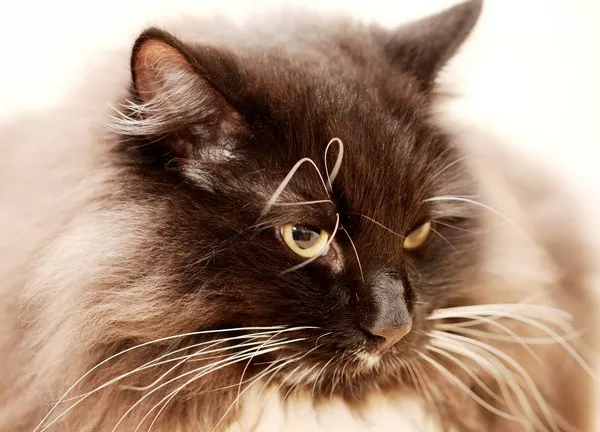Cat purring is one of the most soothing and enigmatic sounds that our feline companions produce. For centuries, the gentle hum of a cat’s purr has been associated with contentment and comfort. Whether your cat is curled up on your lap or lounging in a sunbeam, the rhythmic sound of purring is often a sign of a peaceful and relaxed pet. However, did you know that the act of purring may have more to it than just a sign of feline contentment? In recent years, research has suggested that the frequencies and vibrations produced by a cat’s purr could have a range of health benefits for both cats and humans alike.
In this article, we will delve into the fascinating world of cat purring and explore its potential health benefits. From stress reduction and pain relief to promoting healing and boosting overall well-being, we will explore the science behind these claims and highlight how cats’ purring might be more therapeutic than we ever realized.
What is Purring?
Purring is a low-frequency sound that cats produce by rapidly contracting and relaxing the muscles within their larynx (voice box). This action causes a sudden movement of the vocal cords, creating a vibration that can be heard as a purr. The sound itself is typically a gentle, rhythmic hum, ranging from 25 to 150 Hertz (Hz), a frequency range that is thought to be beneficial for health.
Why Do Cats Purr?
Contentment and Relaxation: The most widely recognized reason for purring is when a cat is in a relaxed, content state. This often happens when they are being petted, cuddled, or resting comfortably.
Communication: Cats may also purr to communicate with other cats, humans, or even other animals. For instance, kittens will often purr when nursing to communicate comfort and bonding with their mothers.
Healing and Recovery: Purring may also serve a therapeutic purpose. Cats often purr when they are injured or sick, possibly to aid in their own healing or to calm themselves during stressful or painful situations.
Stress and Anxiety Relief: Some researchers believe that cats may purr to help manage stress or anxiety, similar to how humans may engage in activities such as deep breathing to calm themselves.
Frequencies and Vibrations Produced by Purring
The key element that sets cat purring apart from other sounds is its frequency and vibration range. Studies have shown that a cat’s purring falls within a frequency range of about 25 to 150 Hz. This is significant because certain frequencies within this range are believed to have healing properties for both cats and humans.
Why These Frequencies Matter:
Healing Frequencies: The frequency range of cat purring overlaps with frequencies that have been shown to promote tissue regeneration, reduce pain, and aid in bone healing. For example, low-frequency vibrations in the 25 to 50 Hz range are known to stimulate bone growth and repair.
Resonance and Vibrations: These vibrations can resonate throughout the body, potentially promoting the healing of muscles, tissues, and bones. This is why some experts believe that cats’ purring could have a therapeutic effect on the human body as well.
In the following sections, we will explore the health benefits that are thought to arise from these frequencies and vibrations.
Health Benefits of Cat Purring
Cat purring has been shown to have several potential health benefits, not only for the cats themselves but also for their human companions. Let’s take a closer look at the key health benefits attributed to cat purring.
1. Reduces Stress
One of the most significant benefits of cat purring is its ability to reduce stress levels. The soothing sound of a cat’s purr can have a calming effect on humans, which may help lower anxiety and create a sense of tranquility.
How It Works:
Vibrational Therapy: The low-frequency vibrations produced by a cat’s purr can help reduce levels of cortisol, the stress hormone, in the body. Cortisol is often associated with feelings of stress and anxiety, and by lowering it, cat purring can help induce a sense of relaxation.
Calming Effect on Humans: Simply being around a cat that is purring can help alleviate stress, which is why many cat owners report feeling more relaxed and calm when their cat purrs. The rhythmic, consistent nature of purring can mimic a meditative state, promoting peace and serenity.
Many studies have shown that listening to soft, repetitive sounds can have a therapeutic effect, similar to mindfulness exercises, helping humans cope with daily stressors. This effect is amplified when paired with physical touch, such as petting a cat while it purrs.
2. Lowers Blood Pressure
Another potential health benefit of cat purring is its ability to lower blood pressure. The calming effect of a cat’s purr, combined with the relaxation it induces, can have a positive impact on cardiovascular health.
How It Works:
Stress Reduction: As previously mentioned, the reduction in stress levels caused by the soothing nature of purring directly affects blood pressure. Lower stress levels lead to a decrease in heart rate and blood pressure, which is beneficial for overall heart health.
Vibrational Healing: Some studies suggest that the vibrations produced by purring may directly influence blood circulation, helping to regulate blood pressure. While this is still a developing area of research, the evidence suggests that the gentle vibrations from a cat’s purr may support cardiovascular function.
3. Promotes Bone Healing
One of the most surprising health benefits of cat purring is its potential to aid in bone healing. The vibrations produced by purring are thought to fall within a frequency range that promotes bone growth and repair.
How It Works:
Frequency and Bone Regeneration: Frequencies within the 25 to 50 Hz range, which are found in cat purring, have been shown to stimulate the healing of bones and tissues. For example, studies on ultrasound therapy have demonstrated that certain vibrations can promote bone regeneration in humans. The vibrations from a cat’s purr may similarly stimulate bone growth, potentially aiding in recovery from fractures and other bone injuries.
Application in Veterinary Medicine: While much of the research on this phenomenon has focused on humans, it is possible that cats use their purring to speed up the healing of their own bones. Cats are known to be resilient creatures, and the therapeutic vibrations from their purring may play a role in their ability to recover quickly from injuries.
4. Improves Breathing
The vibrations caused by cat purring may also benefit individuals with respiratory issues. The calming nature of the purring sound, combined with the vibrations, could help promote deeper breathing and alleviate symptoms of respiratory conditions such as asthma.
How It Works:
Relaxation and Breathing: The relaxing effects of a cat’s purr can help reduce anxiety-related breathing issues, such as hyperventilation or shallow breathing. This can lead to more controlled and deeper breaths.
Potential Benefits for Asthma: Some studies have indicated that regular exposure to low-frequency sounds, such as purring, could have a positive impact on respiratory function, particularly for those with asthma. The gentle vibrations from purring may help improve airflow and reduce inflammation in the airways.
5. Decreases Pain and Swelling
Cat purring may also serve as a natural pain-relief mechanism. The frequencies involved in purring have been shown to reduce pain and swelling, acting as a form of vibrational therapy.
How It Works:
Pain Reduction: The vibrations from purring can stimulate the production of endorphins, the body’s natural painkillers. These vibrations may help reduce pain levels and provide a natural alternative to pharmaceutical pain management.
Reduction in Inflammation: Inflammation is often a contributing factor to pain, and studies suggest that the vibrations from purring can help reduce swelling and promote healing in injured tissues.
6. Promotes Wound Healing
In addition to aiding in bone healing, the vibrations produced by cat purring may also promote the healing of soft tissues, such as wounds, cuts, and bruises.
How It Works:
Cell Regeneration: The low-frequency vibrations in purring are believed to stimulate cellular regeneration, which can accelerate the healing of wounds. Research on vibrational therapy in humans has shown promising results in wound healing, with some suggesting that low-frequency sound waves could help improve tissue repair.
Increased Blood Flow: The gentle vibrations of a cat’s purr may also help increase blood circulation, which is essential for delivering nutrients and oxygen to healing tissues.
Conclusion
The health benefits of cat purring go far beyond a simple expression of contentment. The vibrations and frequencies produced by a cat’s purr may have profound therapeutic effects, from reducing stress and lowering blood pressure to promoting bone and tissue healing. So, the next time your feline friend starts purring, remember that you’re not just hearing a sound of happiness — you may be experiencing the healing power of cat purring.
Related Topics



























